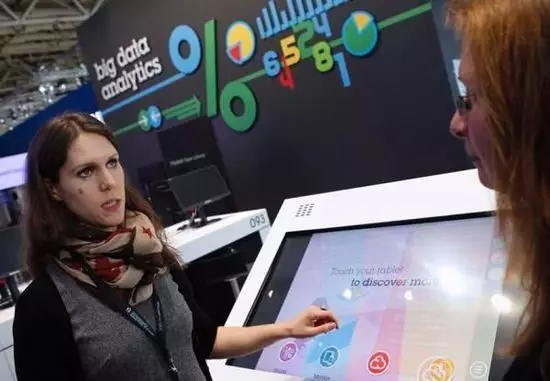| Position: Home > News Center > Special Column |
| How does Germany ensure its status as an innovative power |
| Publish Time:2020-08-26 |
|
Germany is the world's leading manufacturing and exporting country, and an efficient innovation system is essential to maintaining strong international competitiveness. To this end, Germany has introduced a national science and technology development strategy to encourage cooperative innovation with enterprises as the main body, while creating a good innovation environment to ensure its status as an innovation powerhouse.
 国家战略指明创新方向
The German government launched the "High-Tech Strategy" in 2006, which has been revised and upgraded twice so far. The latest version launched in 2014 is also known as the "new high-tech strategy". It focuses on global challenges, introduces more new themes and funding models, and further clarifies the direction for German scientific research and economic development.
The "New High-Tech Strategy" proposes a total of 6 priority development tasks: digital economy and society, sustainable economy and energy, innovative working environment, healthy living, intelligent transportation, and citizen safety. Germany’s recently proposed "Industry 4.0" aimed at integrating information and communication technology and traditional industrial production is an important part of the digital economy and society.
Germany's current "energy transition" strategy is included in the sustainable economy and energy fields. According to the "energy transition" strategy, Germany will reach 80% of power generation from renewable energy by 2050. The ultimate goal is to replace traditional energy with renewable energy. If successful, Germany will become a model for the global response to the challenges of energy supply security and energy price changes.
In addition to the above six priority development tasks, the content of the "New High-Tech Strategy" also includes strengthening domestic and international industry-university-research cooperation, strengthening economic innovation power, introducing mechanisms that are conducive to innovation, and promoting all sectors of society to participate in innovation dialogues on the premise of increasing transparency.
Under the guidance of the national science and technology strategy, Germany's R&D investment accounted for about 3% of its GDP in 2015, which was much higher than the EU's average of 2.03% that year. Germany plans to maintain this ratio until 2020 and achieve 3.5% in 2025.
Actively invest to increase innovation power
The main body of German innovation is enterprises. Data show that the German government invested 14.9 billion euros in R&D in 2015, while the economic sector’s R&D expenditure reached 62.4 billion euros.
However, in recent years, the R&D investment of small and medium-sized enterprises, known as the “pillar of the German economy”, has declined as a percentage of the overall R&D investment in the economy. In order to better promote the innovation of SMEs, the German government has launched a series of support programs for SMEs to help them meet the opportunities and challenges brought about by digitalization, globalization and value chain reshaping.
For example, the “SME Central Innovation Project” mainly supports the cooperation between SMEs and scientific research institutions, the “SME Industrial Cooperation Project” encourages SMEs that cannot independently conduct basic scientific research to cooperate with large enterprises and institutions, and the “SME-Innovation” project It mainly supports small and medium-sized enterprises with the ability to conduct cutting-edge technology research.
Industry-university-research cooperation is a highlight in the German technology innovation system. In order to further strengthen relevant cooperation, the German government has successively selected 15 high-tech industrial clusters in the country in the form of competition. Enterprises, universities and research institutes in each cluster will carry out cooperative innovation around the core industries identified in the region. The government has invested a total of 600 million euros.
In order to promote the transformation of scientific research results of universities, the German federal and state governments launched the "Innovative Higher Education" project in 2016, elevating the "Transformation and Innovation of Achievements" of universities to a position as important as teaching and scientific research. The project funds universities that have specific plans to cooperate with enterprises to carry out technology transformation, and it is expected to invest 550 million euros by 2027.
1501743555(1).jpg
Multi-pronged approach to create an innovative environment
The aging of the population in Germany is serious, so it is necessary to fully develop the employment potential of the whole society in order to provide enough innovative talents. In terms of vocational education, Germany has a famous "dual education" model that closely combines schools and enterprises. At the end of 2014, the German Federal Labor Agency signed the "Vocational Education and Continuing Education Alliance 2015-2018" agreement with the economic community and trade unions to strengthen dual education. The "Vocational Education 4.0" project supported by the German government aims to adapt vocational education to the current needs of digital and automated development.
1501743596(1).jpg
Germany also attaches importance to the education of various social groups. For example, the "Unemployment Insurance Protection and Strengthening of Vocational Education Law" introduced in 2016 encourages unemployed people to receive training and return to work in the form of subsidies. Germany has also launched a "welcome course" for refugee groups to help them connect with German SMEs.
Start-ups, as an extremely innovative group, can obtain a good development environment in Germany. Take the "Investment-Venture Capital Subsidy" program launched by the German government as an example. Investors who successfully apply for investing at least 10,000 Euros in start-ups can get a 20% return subsidy of the investment amount. The German Bundestag also passed a bill at the end of 2016 to allow domestic start-ups to offset current profits and past losses before applying taxes, that is, to compensate start-ups for possible losses in the form of tax deductions.
Germany spends as much as 350 billion euros in public procurement annually. The government specifically commissioned the establishment of an innovative procurement center for this purpose to provide advice on procurement and make public procurement more innovative.
In addition, Germany has also organized a large number of scientific and technological activities such as scientific forums and dialogues and the Year of Science to encourage citizens to participate in discussions and create a social atmosphere conducive to innovation. |

